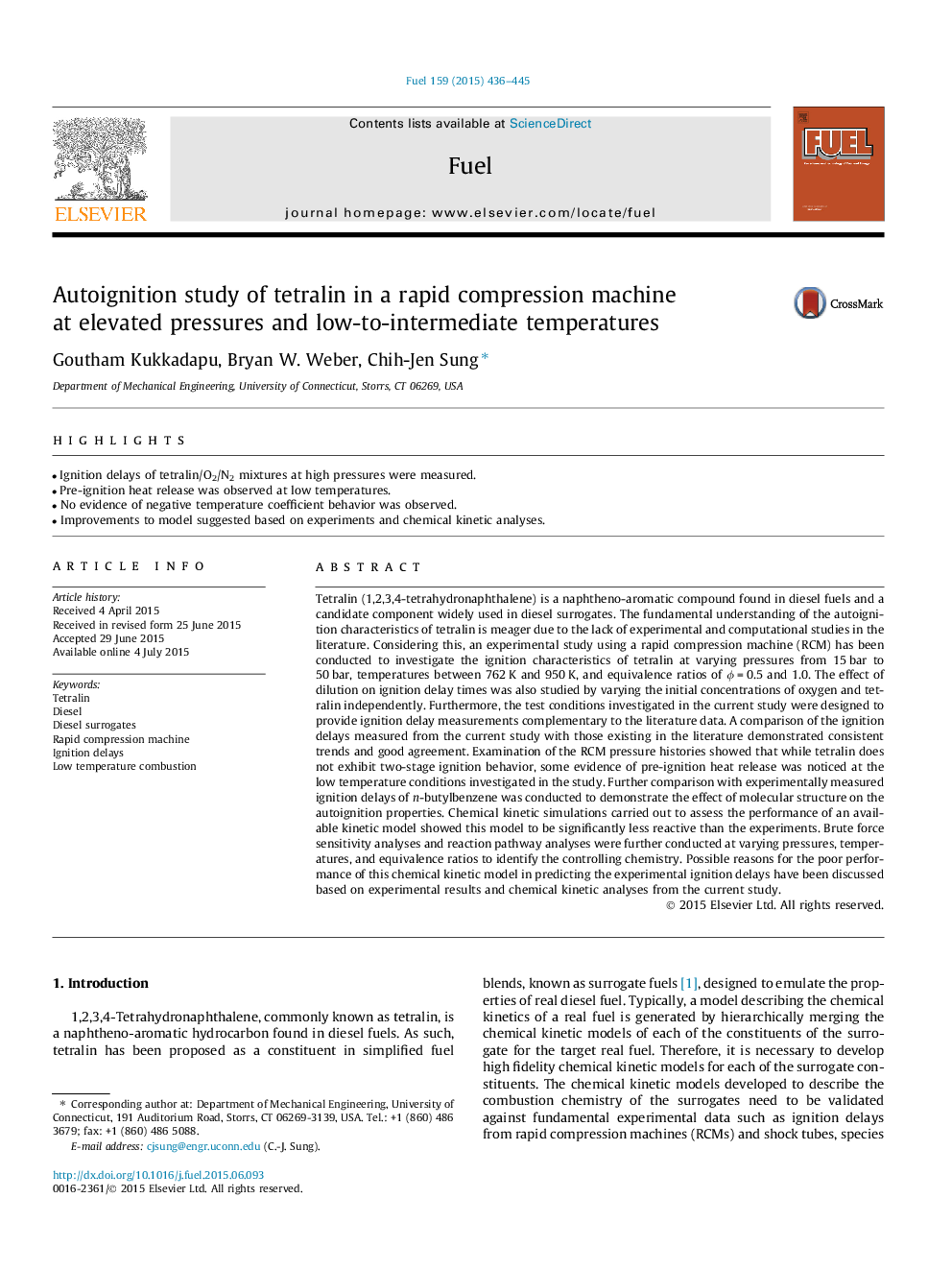| کد مقاله | کد نشریه | سال انتشار | مقاله انگلیسی | نسخه تمام متن |
|---|---|---|---|---|
| 6634660 | 461116 | 2015 | 10 صفحه PDF | دانلود رایگان |
عنوان انگلیسی مقاله ISI
Autoignition study of tetralin in a rapid compression machine at elevated pressures and low-to-intermediate temperatures
ترجمه فارسی عنوان
بررسی اتمسفری تترالین در دستگاه فشرده سازی سریع در فشارهای بالا و دمای پایین تا متوسط
دانلود مقاله + سفارش ترجمه
دانلود مقاله ISI انگلیسی
رایگان برای ایرانیان
کلمات کلیدی
تترالین، دیزل، جایگزین دیزل، دستگاه فشرده سازی سریع، تاخیر در احتراق احتراق دما پایین،
موضوعات مرتبط
مهندسی و علوم پایه
مهندسی شیمی
مهندسی شیمی (عمومی)
چکیده انگلیسی
Tetralin (1,2,3,4-tetrahydronaphthalene) is a naphtheno-aromatic compound found in diesel fuels and a candidate component widely used in diesel surrogates. The fundamental understanding of the autoignition characteristics of tetralin is meager due to the lack of experimental and computational studies in the literature. Considering this, an experimental study using a rapid compression machine (RCM) has been conducted to investigate the ignition characteristics of tetralin at varying pressures from 15Â bar to 50Â bar, temperatures between 762Â K and 950Â K, and equivalence ratios of ÏÂ =Â 0.5 and 1.0. The effect of dilution on ignition delay times was also studied by varying the initial concentrations of oxygen and tetralin independently. Furthermore, the test conditions investigated in the current study were designed to provide ignition delay measurements complementary to the literature data. A comparison of the ignition delays measured from the current study with those existing in the literature demonstrated consistent trends and good agreement. Examination of the RCM pressure histories showed that while tetralin does not exhibit two-stage ignition behavior, some evidence of pre-ignition heat release was noticed at the low temperature conditions investigated in the study. Further comparison with experimentally measured ignition delays of n-butylbenzene was conducted to demonstrate the effect of molecular structure on the autoignition properties. Chemical kinetic simulations carried out to assess the performance of an available kinetic model showed this model to be significantly less reactive than the experiments. Brute force sensitivity analyses and reaction pathway analyses were further conducted at varying pressures, temperatures, and equivalence ratios to identify the controlling chemistry. Possible reasons for the poor performance of this chemical kinetic model in predicting the experimental ignition delays have been discussed based on experimental results and chemical kinetic analyses from the current study.
ناشر
Database: Elsevier - ScienceDirect (ساینس دایرکت)
Journal: Fuel - Volume 159, 1 November 2015, Pages 436-445
Journal: Fuel - Volume 159, 1 November 2015, Pages 436-445
نویسندگان
Goutham Kukkadapu, Bryan W. Weber, Chih-Jen Sung,
